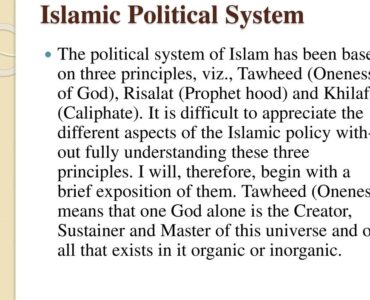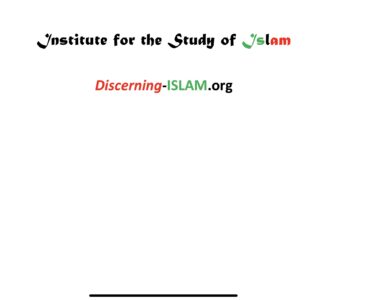
The Institutional Foundations Of The Postcolonial State
An important, and yet until recently ignored, legacy of colonialism is the manner in which it has given form to the institutional foundations, and thus the parameter of politics, of the postcolonial state. Independence ended the sovereignty of European powers over their territories; it did not, however, produce states de novo. The postcolonial state inherited the machinery of the colonial state, and to varying degrees, followed the model of the colonial state. In such cases as India, the continuity between the two was quite conspicuous. Muhammad Ali Jinnah first became the governor-general of Pakistan, and the India Act of 1935 was the law of the land until the Constitution of 1956 was promulgated some nine years after independence. Elsewhere the continuity is less apparent, as in Algeria or Libya. Still, even in these countries the manner in which the state works and relates to social forces has more in common with the colonial era than state leaders would admit. Ideological continuities generally have been easier to discern. The rhetoric of state leaders may also have had a hand in confounding the relations between the colonial and postcolonial states. It has become increasingly evident, however, that the postcolonial state, all protestations to the contrary notwithstanding, has been less a seed planted at independence and more a later growth in an old tree — new branches on the trunk that grew during the colonial era. Even when high politics of the state may have sought to chart new courses, at its foundations the state ineluctably followed in the footsteps of the colonial era. Colonialism accounts for more in postcolonial states than previously assumed. Policy choices, the way those choices have been implemented, and how the state has developed — all of this has occurred in a framework that was conceived and entrenched during colonial rule.
Although the aim and the general structure of authority of colonialism was much the same from Indonesia to Nigeria, there were important variations in how the colonial administrators actually ruled over their vassal populations. These variations account for differences among the experiences with state formation after independence. Colonial administration exerted authority directly as well as indirectly, through local elites, chiefs, and mercantile forces. In Algeria and Libya colonial rule was direct, while in Morocco, Tunisia, Malaya, Java, and India it used local elites to a good extent. In Java the numerical weakness of the Dutch led them to rely on local elites and chiefs to manage the labor supply. The consequence was to entrench the sociopolitical position of the intermediary elite, to create dependencies between the peasantry and the elite, and also to permit extensive exploitation and impoverishment of the masses in the process of generating a labor supply.
In India a third of the population were ruled, nominally at least, by some 250 maharajas (Hindu princes and kings) and nawabs (Muslim princes and kings) as well as the Nizam (hereditary rulers) of Hyderabad (a state that was larger than France) and the Aga Khan. These princes had little real autonomy and were carefully controlled by British political officers, but they wielded much authority over their populations. The relations between the subjects of the princes and those who lived under direct British rule was very different, however. Through the princes the British were able to control a large part of India with the least amount of political cost. Even in those territories in which British rule was direct, landowners, traditional elites, and local chiefs and grandees were used to bolster British rule. Beginning in 1861, landlords were inducted into the largely honorific advisory body called the Viceroy’s Council and allowed to dominate local politics — this lasted until the interwar period.
A symbiotic relationship then developed between the princes and local elites and the British, whereby the British agreed to the social status of the local elites and the elites in turn provided local support and social control for the British. This pattern of politics made the local elites important power brokers, entrenched their sociopolitical positions, and encouraged them to favor the compartmentalization of the policy in place of a uniform national political arena, wherein they could wield power by controlling segments of the polity and negotiate for its support with the center. The patronage of the British often allowed the institutional power and reach of the princes and local elites to increase, which made it more difficult for the nationalist elite to penetrate their domain and later for the state to curb it. For instance, British policy in India gave the landowning class tremendous power over the peasantry, which helped to consolidate the control of the landowners over the rural population. In Pakistan this trend has been most evident. The landowning class has not only wielded tremendous power in the country, controlling politics at all levels, but it also has successfully resisted land reform. The landowning class therefore controls political support in its estates and is in a position to bargain with the center. In the Persian Gulf emirates British policy helped to strengthen tribal chiefs, and in Malaysia the local kings. The power of the monarchy in the Persian Gulf emirates and in Brunei is to a large extent a result of these colonial policies. Similar trends also characterized relations between the British and tribal chiefs in East Africa and Nigeria, with a similar impact on state formation.
Although French colonial rule was generally centralized, it too at times followed policies similar to British colonialism. Where and when the French used the intermediary role of the local elites, however, it had less to do with the efficacy of this approach and more with limitations to centralized colonial rule or the perceived importance of the colony to France. Lisa Anderson has written that in Tunisia, because the protectorate was not very important to France, the French let local institutions of power persist and used the local mercantile classes as the means of pushing into the countryside. A local bourgeoisie thus emerged that helped to strengthen the colonial state and in turn benefited from the strengthening of that state. Under the Neo-Destur party in Tunisia, state consolidation followed the pattern first established under French rule and thus involved following the French pattern of extending the state’s reach into untapped areas and extending Tunis’ administrative reach. In Morocco, similarly, General Lyautey conceived of the French role as recognizing Moroccan political culture and accepting the social mores on which it was based. He saw France as a protector, best served if it worked through the existing political, cultural, and social institutions.
Tripoli, Libya, was occupied by the Italians in 1912, as the Ottoman Empire’s hold over the region weakened. The Italians constructed Western-style buildings and insisted on segregating settlers from locals, especially in economic matters, and so no local elite developed to take over once the Italians departed after World War II.
In Algeria and Libya under French and Italian rules a different pattern emerged. There the colonial state did not seek to operate through local elites as much as it sought to establish the paramount role of the colonial administration and to rule through the settlers. It can be argued that Morocco, Tunisia, and later Syria were exceptions to French rule, which typically had a penchant for centralization that may have been embedded in France’s own political culture. That Morocco and Tunisia were protectorates and Syria later only a mandate may have made these territories less attractive or central to the French scheme of empire, and thus led to less investment in centralized rule and greater reliance on local forces. That France came to view Algeria as a part of France — a sentiment captured in a famous saying of the time: “France is cut by the Mediterranean as Paris is cut by the Seine” — encouraged ruling it directly, both because that was acceptable to the settlers and because centralized rule would guarantee greater integration into France. French rule in Algeria was not only interested in economic gain but also in the integration of Algeria into France. It is important to note that to the extent to which French colonialism in Algeria was engaged in economic gain, it was making such gains through the large numbers of French citizens who had settled the best land in Algeria, and not the local population, the mercantile classes, or the emerging bourgeoisie. Political compromises, necessary for facilitating economic gains from the local economy, were thus not necessary in Algeria. All compromises involved the economy of the settlers, whose leaders were distinctly hostile to all Algerian political expressions. It is also arguable that in Algeria, France found only a weak local power structure, one that could be easily overcome and one that would not have been a suitable basis for colonial authority. It was thus quickly replaced with direct administration.
In Libya, by contrast, the Italians had a different attitude, although they followed similar policies. Italy’s main concern was not managing the economy but proving its own primacy. Hence, they too saw no need to forge political alliances with local elites that would facilitate extracting economic gain from the local economy. Italy, in fact, insisted on segregating the settlers and the locals, especially in economic matters. Therefore no local bourgeoisie emerged, and the local population was not tied to the expansion of the colonial state, whereas in Tunisia nationalist leaders had established their ties of patronage to the population as part of the expansion of the colonial state. The colonial state had thus facilitated the emergence of a Tunisian power structure centered in an urban bourgeoisie that had penetrated the rural areas at the back of the colonial state; Libya, by contrast, had no viable local state elite to take over from Italy, because no expansion of the local state involving the local bourgeoisie had happened. The urban Libyans had not developed any ties of patronage beyond their immediate locales because they had not had any reason to venture beyond them. Italian rule in Libya was absolute and led to little local institution building. At independence, Libya thus lacked a stable state machinery and was not able to continue in the footsteps of the Italians. Libya actually had to create a state. The colonial legacy gave Libya its independence and shape but not a viable state. The Libyan state was at the outset an ad hoc one, which lacked continuity and penetration of society and had little authority. It relied heavily on the writ of the monarchy, which made it vulnerable. The monarchy’s collapse and the rise of the absolutist and arbitrary rule of Muammar Qaddafi occurred in this context.
Differences between how colonial powers conceived of their authority and how this authority had to be implemented had to do with two issues: how best to maximize economic gain from the colony, and whether the colonial power had a political-cultural agenda in mind. If economic gain was the primary motive, and this gain was not tied to a large settler population, it was likely that colonial administrations would appeal to local elites for political support or create conditions for the rise of a mercantile and bourgeois elite. Both of these elite groups would develop vested interests in the colonial state and would eventually become tied to the workings of the parent state centered in Europe. Both groups would therefore be important to the future workings of the successor state. Which group would eventually dominate — the landowners in Pakistan or the bourgeois elite in Tunisia — would depend on their relative power during colonial rule.
Where and when colonialism saw its economic gain in a settler community, or saw the purpose of colonialism as proving the political and cultural supremacy of the parent state, it was less likely to rule through the local elites or support the rise of a local elite. In such cases, as in Algeria and Libya, the colonial state would lack any serious local components that would have ties to the colonial administration and have vested interests in its power and reach. The postcolonial state in such cases would be weak and vulnerable, lacking in a social base and strong economic and political institutions.
Beyond the structure of colonial authority, how the colonial state exercised that authority and how it was perceived by the local population was of great importance to later state developments. The colonial state, unlike the European state, was from inception based on segregation of Europeans from locals in law, economic relations, administration, political matters, and social life. It was not based on the European conception of civil societies but on centralized and non-representative bureaucracies that ruled by force and encouraged as well as managed social divisions. As a result, mass-based parties are a rarity in Muslim states. The United Malays National Organization in Malaysia or the Neo-Destur in Tunisia are examples of genuine party organizations. The National Liberation Front in Algeria or Bath parties in Syria and Iraq to a limited extent have served as genuine parties. Elsewhere, however, personalized rule has been the order of the day. Nasser’s Arab Socialist Union never evolved into a genuine party, and the Shah’s experiment with the Rastakhiz (Resurrection) party or the Ayatollah Khomeini’s with the Islamic Republic party did not amount to much.
The essence of the colonial state became giving shape to those agencies and institutions that would assume domination. Unbound by constitutional limitations and citizenship rights, the colonial state had broad powers to act, and it did so viewing itself as bound to the “superior” European values. It acted on reasons of state (those of Europe), which in the eyes of the local population were condescending and paternal, unaccountable, and by nature avowedly transformative rather than managerial. These are exactly the attitudes that would become a part of the developmentalist ideology of the postcolonial state. The postcolonial state and its nationalist elite had rejected the colonial state’s right to rule their populations and to represent their interests, but they never rejected the colonial state’s views of the state’s function in the colonial territories. In many regards the postcolonial state became an indigenization of the colonial state. The opposition to the state in the Muslim world today, although couched in Islamic rhetoric, in large measure reiterates these original nationalist complaints about the colonial state. Just as the nationalist elite rejected colonialism’s claim to represent local aspirations in transforming society, the Islamist opposition similarly questions the ruling regime’s claim to represent popular aspirations in pursuing secularization and development.
Generally speaking, the colonial state’s goal was to establish domination, to ensure legitimacy as well as security (internal and external), to maintain autonomy first from the local society but eventually also from its parent state in Europe, and to extract economic surplus. These aims were achieved as the colonial state devised and refined its institutional setup. That institutional setup in turn determined the workings of the successor states, the nature of relations between the state and society within them, and the paradigm that governs their politics. The institutional setup is perhaps the most pervasive legacy of colonialism. The colonial state was by nature highly centralized and dependent on a core of institutions (such as the police, the military, and the bureaucracy) that served as the repositories of its authority. That authority guaranteed the continuation of European domination and extraction of resources to the advantage of the European power. Some institutions, such as the bureaucracy, were not designed primarily to enforce order but to efficiently manage the running of the machinery of government and the economy. Other institutions, such as the judiciary, were intended to help with the management of order within a legal framework, but their character had more to do with European traditions than with the functions they had to perform. Still, the confluence of the activities of the bureaucracy, the judiciary, and the coercive instruments of the colonial state constituted an institutional structure that allowed a small European minority to rule over vast territories with the help of local agents, and to manage the economic flow of goods and resources between colonial territories and Europe. So important were these institutions that they eventually constituted the basis of the postcolonial state and thus determined the character of that state and the nature of its relation with the society. In many ways states such as Pakistan are replicas of the colonial state, not only in the manner in which they are set up and function, but more important in how they envision their own roles. The military and the police are perhaps the most evident examples of the institutional and ideological continuity of colonialism.
The Institutional FoundationsOf The Postcolonial State
803 – 035
https://discerningi-slam.org
Last Updated: 04/2022
See COPYRIGHT information below.



